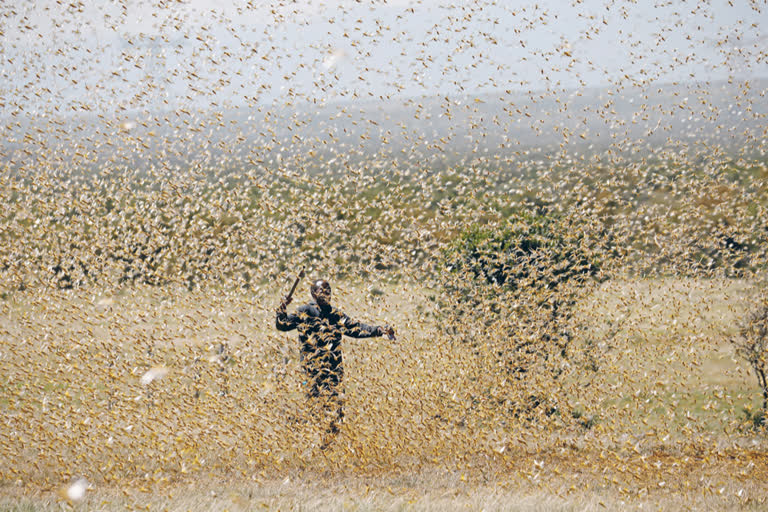Lucknow: Several districts of Uttar Pradesh, including Jhansi, Chitrakoot, Prayagraj, Pratapgarh, Bhadohi, Azamgarh and Ambedkar Nagar, have been facing locust attacks in the past 48 hours.
In Uttar Pradesh, locust swarms have invaded several districts in the past 48 hours and attacked trees and crops.
The UP Agriculture Department said that the authorities of the neighbouring districts like Hamirpur, Banda, Fatehpur, Kaushambhi, Mirzapur, Sultanpur, Mau and Ballia have been asked to remain alert.
Deoria, the home district of state Agriculture Minister Surya Pratap Shahi, in eastern Uttar Pradesh has also faced locust attacks.
"A swarm of locusts had come to Deoria, but they descended only on the Baisila Mainuddin village. Villagers made noise and chased them away. The swarm has gone towards Kushinagar. We are spraying chemicals to kill the pests and all districts have been put on alert," he said on Sunday.
Shahi said insecticides are being sprayed through fire department vehicles. People have been told to make loud noise by beating 'thaalis' and other utensils, he said. Police sirens will also be blared and smoke would be used to chase the locusts away.
READ: Swarm of locusts reaches Rajasthan's Dholpur
The minister said that, "The UP government has given Rs five lakh to each of the bordering districts of the state for spraying chemicals to kill locusts. Apart from this, a monitoring committee has been formed in each district under the chief development officer to continuously monitor the situation."
Deoria District Magistrate Amit Kishor said a swarm spotted in the district has now moved to Kushinagar.
With the onset of monsoon in the state, Jodhpur-based Locust Warning Organisation (LWO) has intensified preparation to control the population of locusts that are hovering in the desert areas between India and neighbouring Pakistan which are now a breeding ground for the pests.
According to experts, broadly four species of locusts are found in India -- desert locust, migratory locust, Bombay locust and tree locust. The desert locust is considered the most destructive since it multiplies rapidly and is capable of covering 150 kilometres in a day.
Also, read: Locust swarms spotted in Uttar Pradesh's Sultanpur
This insect, a type of a grasshopper, can eat more than its body weight. A one square kilometre of locust swarm containing around 40 million locusts, can eat as much food as 35,000 people in a day.
Experts blame the growing menace of desert locusts on climate change. They say breeding of locusts is directly related to soil moisture and food availability.
IANS



